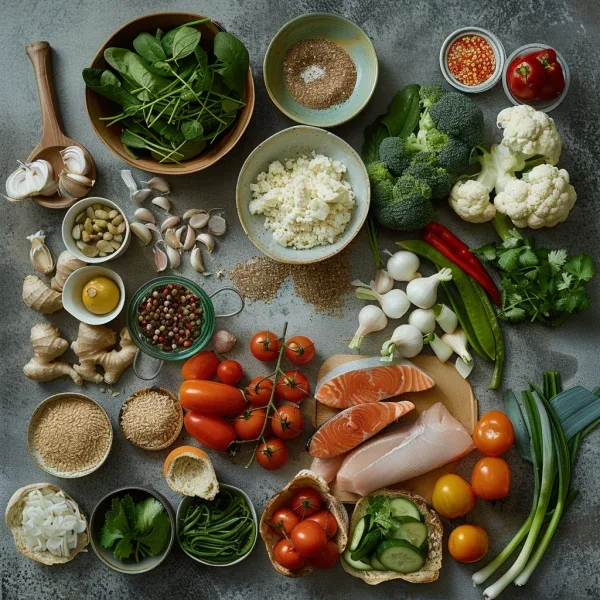by Nadia Sinclair

Feeling light and comfortable is no longer a distant dream. Here’s a straightforward seven-day diet regimen crafted by a respected nutritionist to swiftly tackle your bloating issues. Too often, we find ourselves grappling with an uncomfortable and inflated tummy. Even the research points towards 10-30% of the population wrestling with bloating regularly.
Multiple factors can contribute to this unease, from imbalances in gut flora and constipation to hormone shifts and dietary excesses. Yet, the primary cause, more often than not, is unabsorbed high-FODMAP foods fermenting in the gut. This fermentation attracts more fluid and generates gas, leading to a swollen belly.
Incorporating low-FODMAP foods into your meals can go a long way in reducing bloating. Low-FODMAP foods can be digested easily, striking at the root of digestive distress. By decreasing the fermentation of sugars in the colon, these foods thwart gas and bloating.
A crucial takeaway from the eminent researchers at Australia’s Monash University is to merely substitute high-FODMAP foods with their low-FODMAP counterparts for a few weeks. After figuring out the foods that cause the most discomfort, you will move onto an introductory phase. During this period, working with a knowledgeable dietitian or nutritionist would be very advantageous.
The collection of high-FODMAP food items is extensive, influenced vastly by portion size. Some common culprits includes apples, pears, onions, garlic, cabbage, ice cream, milk, wheat, barley, rye, honey, lentils, beans, cashews, pistachios, and artificial sweeteners.
Different Triggers of Bloating
In addition to dietary concerns, other factors can also cause bloating. Hormonal fluctuations, chiefly during the luteal phase of the menstrual cycle, can trigger water retention and subsequently bloating. Eating hurriedly also leads to poor digestion and gas build-up. Consuming foods containing sugar alcohols like mannitol, xylitol, and sorbitol can lead to gas since these compounds can be hard to digest. Inconsistent eating patterns, negligible fiber intake, and stress, among others, are also known contributors.
Exercise can play a vital role in controlling bloating. Some simple cardiovascular activities like walking or performing daily yoga stretches can assist in eliminating gas. Stress and anxiety can hamper digestion, and thus it is crucial to have a proper relaxation and stress management plan. Certain probiotics may aid both in stress management and easing bloating.
A 7-Day Plan to Reduce Bloating
A meticulously curated seven-day diet plan featuring low-FODMAP meal ideas can act as your roadmap to reduce bloating speedily. Sample meals include a Monday breakfast of gluten-free low-FODMAP granola with lactose-free yogurt or a Saturday lunch of a chicken and salad gluten-free wrap. Tasty snacks can include gluten-free oat cakes with a touch of peanut butter or a plant-based protein shake made from coconut milk and frozen pineapple chunks.
Following these nutritionist-approved recipes structured over the span of a week can form the building blocks of a consistent low-FODMAP eating lifestyle. It’s time to say goodbye to pesky bloating once and for all.
Speaking of nutrition, stick around to keep up with the latest nutrition trends that can pep up your health routine—keep your gut health in check with yoga or understand the best foods to consume post-workout.
bloating, nutrition, low-FODMAP diet, gut health, digestive health, nutritionist diet plan, healthy eating, women’s health, diet plan
Leave a Reply